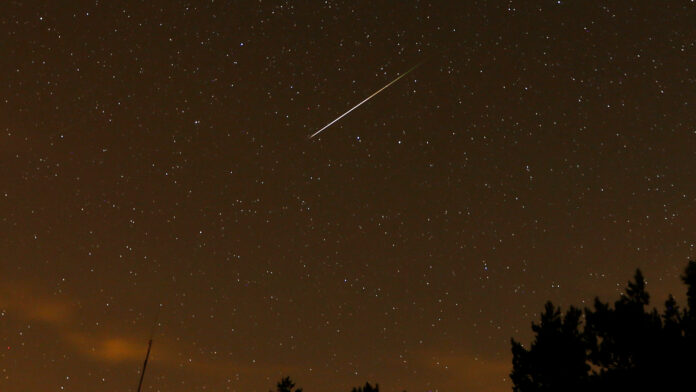The Perseids are back to dazzle the sky with bursts of light and color.
The annual meteor shower, active since July, peaks before dawn Monday. It’s one of the brightest and most easily viewed showers of the year, producing “bright blue meteors – and lots of them,” said University of Warwick astronomer Don Pollacco.
More than 50 meteors per hour are expected, according to the American Meteor Society. The shower lasts through Sept. 1.
Here’s what to know about the Perseids and other meteor showers.
What is a meteor shower?
Multiple meteor showers occur annually and you don’t need special equipment to see them.
Most meteor showers originate from the debris of comets. The source of the Perseids is the comet 109P/Swift-Tuttle.

FILE – In this long exposure photo, a streak appears in the sky during the annual Perseid meteor shower at the Guadarrama mountains, near Madrid, Aug. 12, 2016.
AP Photo/Francisco Seco, File
When rocks from space enter Earth’s atmosphere, the resistance from the air makes them very hot. This causes the air to glow around them and briefly leaves a fiery tail behind them – the end of a “shooting star.”
The glowing pockets of air around fast-moving space rocks, ranging from the size of a dust particle to a boulder, may be visible in the night sky.
The Perseids result from “bigger particles than a lot of other showers,” said NASA’s Bill Cooke, giving them the appearance of “bright fireballs” – easier to spot than many others.
How to view a meteor shower
Meteor showers are usually most visible between midnight and predawn hours.
It’s easier to see shooting stars under dark skies, away from city lights. Meteor showers also appear brightest on cloudless nights when the moon wanes smallest.
The Northern Hemisphere will have the best view of the Perseids. This year’s peak coincides with a moon around 44% full.
When is the next meteor shower?
The meteor society keeps a list of upcoming large meteor showers, including the peak viewing days and moonlight conditions.
The next major meteor shower will be the Orionids, peaking in mid-October.
___
The Associated Press Health and Science Department receives support from the Howard Hughes Medical Institute’s Science and Educational Media Group. The AP is solely responsible for all content.
Copyright © 2024 by The Associated Press. All Rights Reserved.



